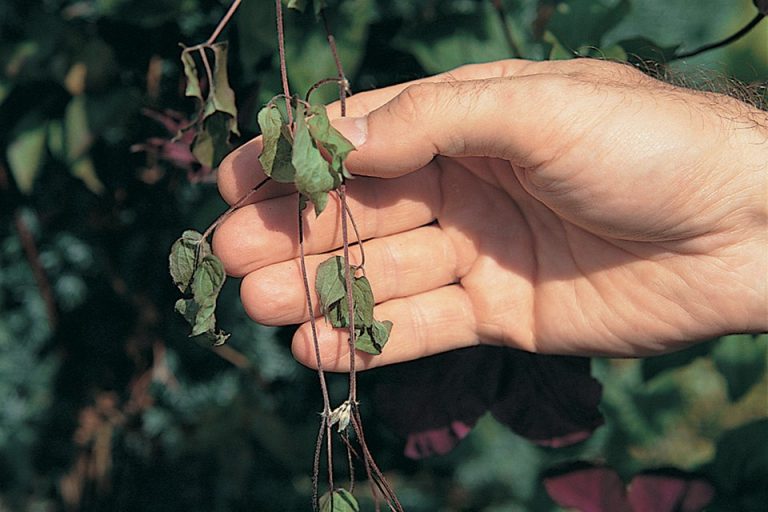Clematis Wilt

Clematis wilt is a fungal disease that affects clematis vines, causing sudden wilting and browning of the foliage. This disease is primarily caused by the soilborne fungus, Phoma clematidina. Clematis, a popular and beautiful flowering vine, is susceptible to this pathogen, and if left unchecked, clematis wilt can lead to severe damage or even death of the plant.
The symptoms of clematis wilt typically manifest as a rapid collapse of the upper parts of the plant, with affected stems and leaves turning black or brown. The fungus infects the vascular system, disrupting the flow of water and nutrients, which results in the sudden wilting. It often occurs during warm and humid conditions, creating an ideal environment for the fungus to thrive.
Preventing clematis wilt involves implementing several cultural practices to create an unfavorable environment for the fungus. Start by planting clematis in well-draining soil with good air circulation. Proper spacing between plants and avoiding overcrowding can reduce the risk of disease transmission. Additionally, mulching around the base of the plant helps maintain consistent soil moisture and prevents the spread of spores from splashing onto the leaves.
Regularly inspecting clematis plants for signs of wilt and promptly removing and destroying infected plant material is crucial for preventing the spread of the disease. Pruning affected stems below the infected area can sometimes save the rest of the plant. If the affected stem is entwined around a support or other stems, cut it out, do not tear it out where you might damage some healthy stems and transfer the spores to them. Disinfecting pruning tools between cuts with a solution of 10% bleach or rubbing alcohol helps prevent further contamination.
Fungicidal treatments may also be employed as a preventive measure, especially during periods of high humidity. Applying fungicides containing active ingredients such as thiophanate-methyl or copper-based compounds can help protect clematis from infection. However, it’s essential to follow the manufacturer’s instructions carefully. At the nursery we spray monthly during spring as a preventative measure.
In conclusion, clematis wilt can be a serious threat to these stunning vines, but with proper care, monitoring, and timely interventions, gardeners can effectively prevent and manage the disease, ensuring the health and longevity of their clematis plants.
